Australian Tropical Rainforest Plants - Online edition
Bowenia spectabilis Hook. ex Hook.f.
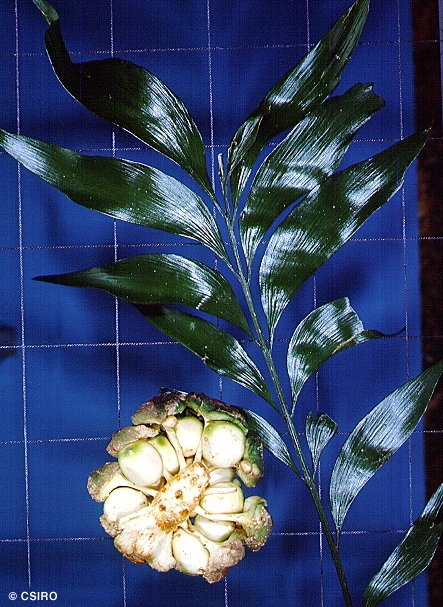
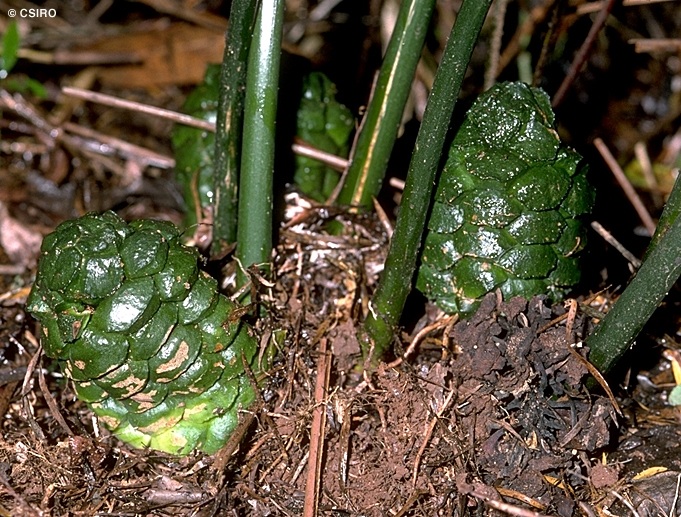
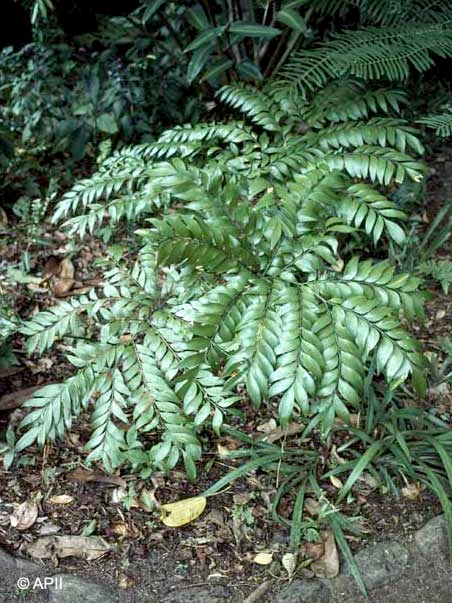
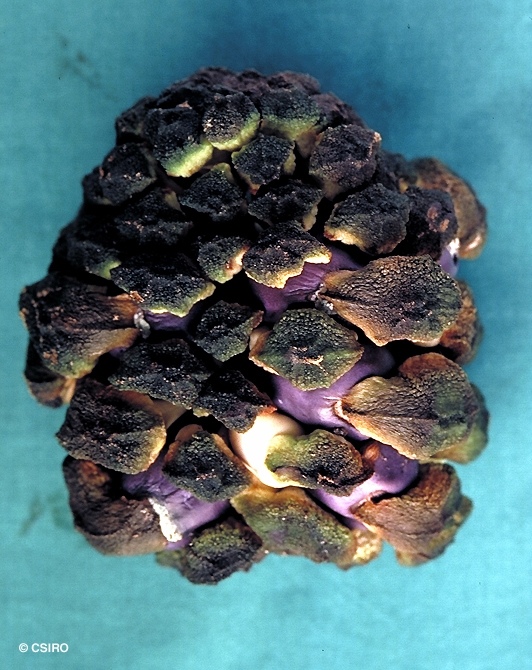



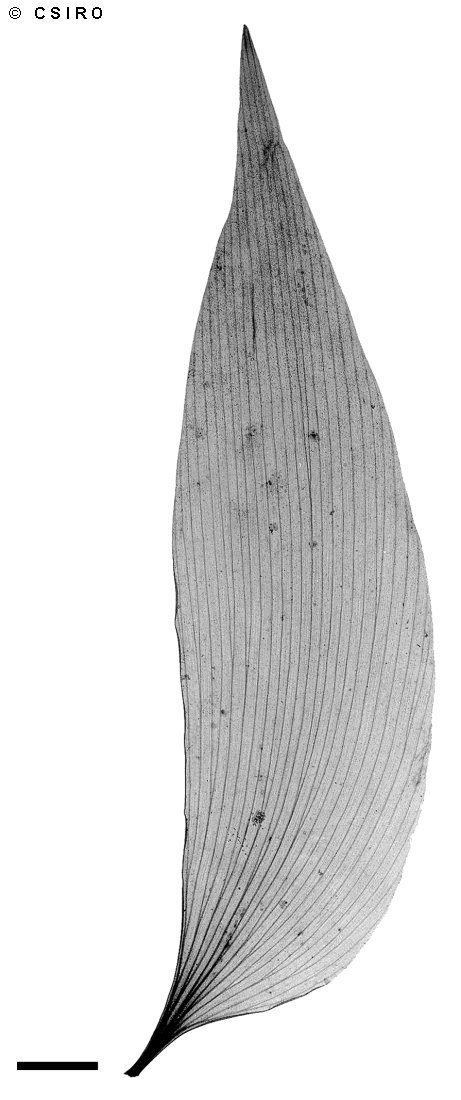
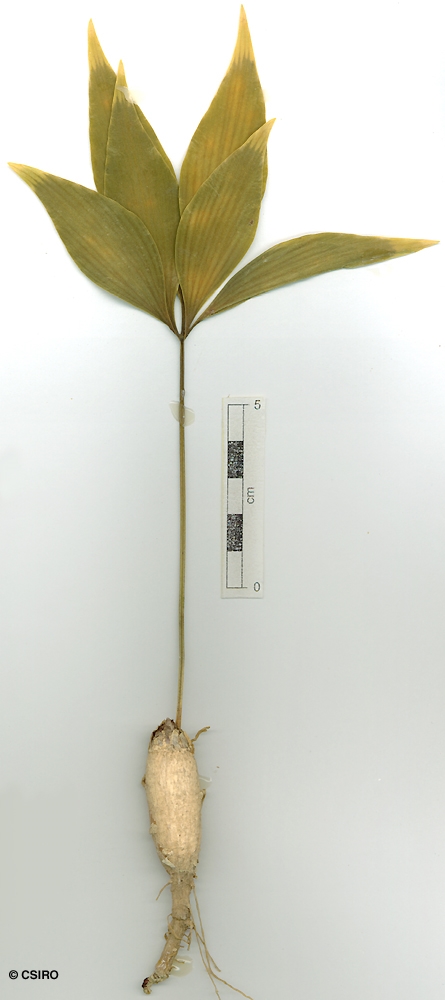
Hooker, J.D. (1863) Curtis's Botanical Magazine 89 : t5398. Type: the plate, Bot. Mag. t. 5398 (1863); illustrated from a cultivated plant.
Zamia Fern
Leaves 1-7 in the crown. Compound leaf petiole to about 1.2 m or taller. Compound leaf spreading to 100-200 cm long by 100 cm broad. Leaflet margins entire, with a few lacerations, or sometimes regularly serrate. Leaflet blades about 7-15 x 1.2-4.5 cm, lanceolate to ovate, asymmetrical particularly towards the base. Upper surface of the compound leaf rhachis (both primary and secondary) with a ridge down the middle and a groove or channel on each side. Venation longitudinal and parallel without a midrib. Leaflets about 30-200 or more per compound leaf.
Male cones pedunculate and raised slightly above ground level, female sessile. Male cones: sporophylls in a cone about 5-7 x 2.5-3 cm, produced at the base of the plant just above ground level, peduncle about 70 mm long; anthers or pollen sacs (microsporangia) about 50-70, sessile, borne on the underside of each cone scale +/- at random. Female cones: megasporophylls in a sessile cone about 10 x 10 cm; ovules borne on the underside of the cone scales, two ovules per cone scale. Outer surface of each cone scale clothed in numerous short hair-like dark brown glands.
Seeds produced in a cone about 8-16 x 6-10 cm. Cones raised above ground level. Each cone consists of up to 70 scales each of which can produce up to 2 seeds. Seeds about 22-30 x 17-23 mm completely enclosed in an aril (sarcotesta) which is usually white to cream but turns mauve or purple at maturity. This colour change is unlikely to be seen in the forest as the seeds are popular with rats and perhaps other animals. Embryo intricately folded and coiled in a cavity about 6 mm long.
First leaf compound with 3-5 leaflets arranged in a palmate fashion. Venation in each leaflet longitudinal and parallel. At the tenth leaf stage: leaflet blades with longitudinally parallel venation but without a midrib. Taproot thick and carrot-like (Daucus carota). Coralloid roots grow upwards and when sectioned dark coloured masses of blue-green algae can be seen. Seed germination time 89 to 243 days.
Endemic to Queensland, occurs in CYP and NEQ. Altitudinal range from near sea level to 700 m. Grows as an understory shrub in well developed, undisturbed lowland and upland rain forest. Probably most common on red soils derived from basalt.
Consumption of leaf material is suspected of causing 'Zamia staggers' in cattle. Everist (1974).
Seeds often eaten by native rats before the cone is fully mature.
Commonly cultivated in the garden or as a potted plant for indoors.





